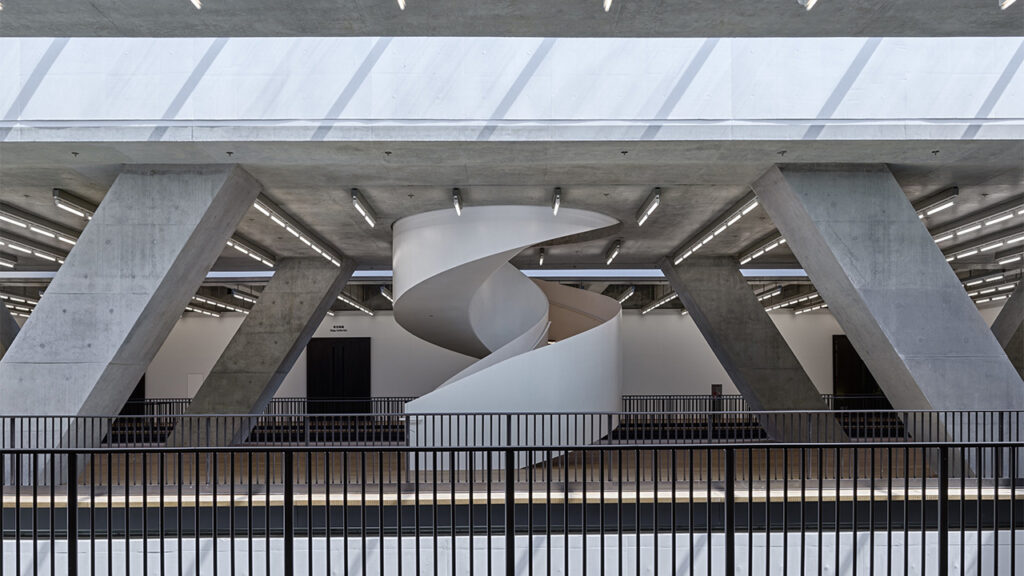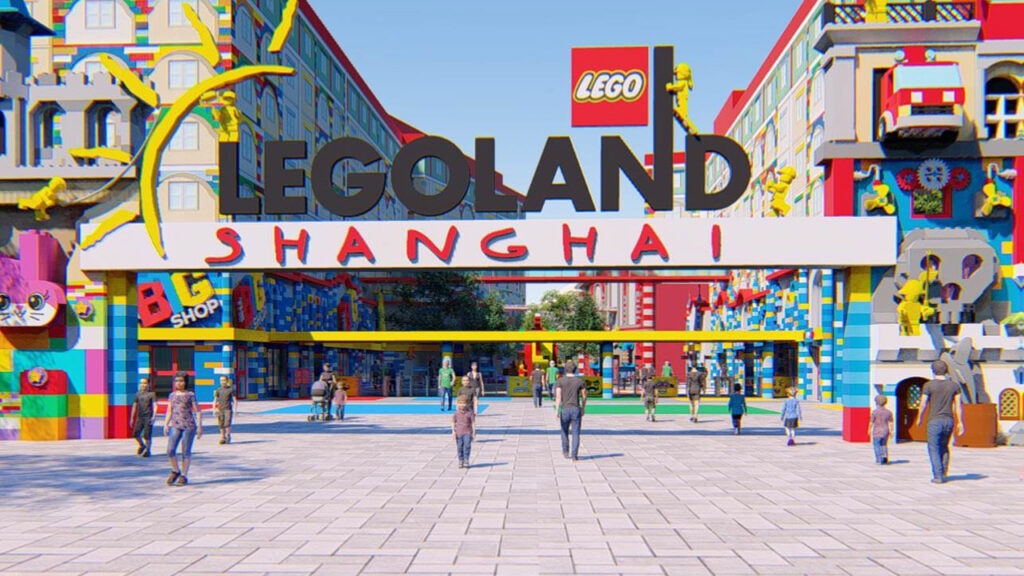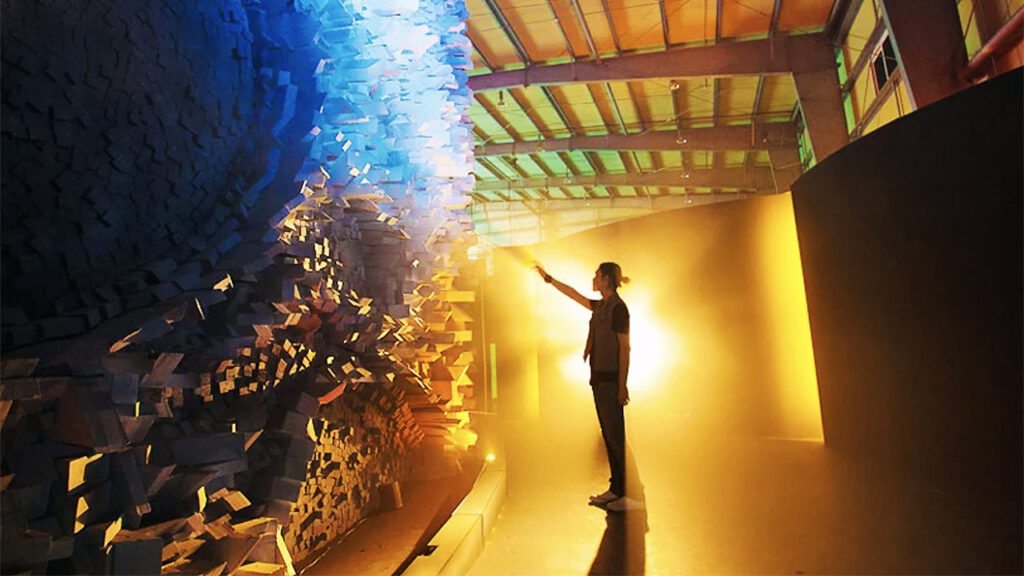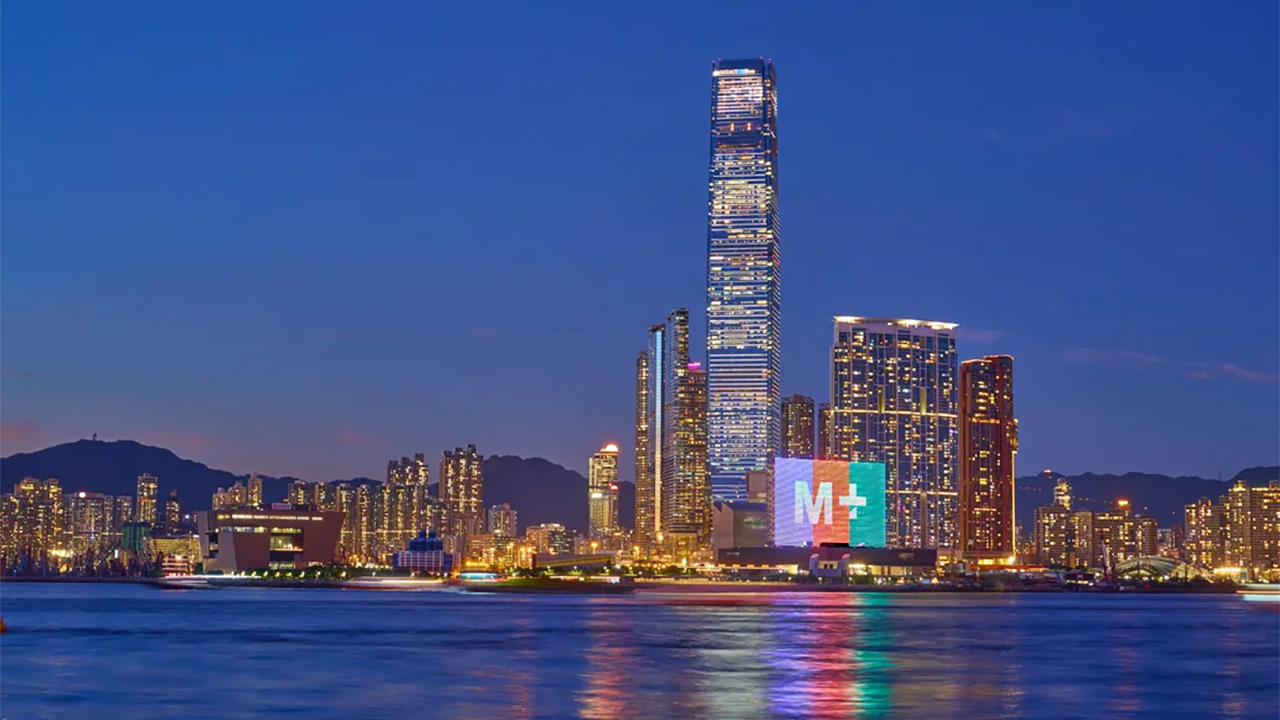From October 4 to 6, Blooloop hosted its digital conference, V-Expo 2021, which, this year, leads with the theme, “Celebrating Innovation in Visitor Attractions.” Speakers from M+, Disney, Merlin Entertainment, and more gathered to discuss how the pandemic has accelerated tech and infrastructure innovations in the museum and attractions industries. V-Expo 2021 attendees were presented with an array of discussions ranging from reimagining sustainability to the future of augmented reality (AR). We’ve rounded up three key takeaways from the conference.
Sustainability and accessibility are top-of-mind

Designed by Herzog & de Meuron, the upcoming M+ Museum encompasses 17,000 square meters’ worth of exhibition space with sustainable features. Image: Herzog & de Meuron
As Hong Kong’s M+ plans its physical opening on November 12, key to both its operations and exhibition content is sustainable design. “One of the clear pieces of work that COVID has pushed through is the need to be energy-efficient, green in our attitude,” Suhanya Raffel, the Director of M+, said. For instance, M+ will only provide industry-standard air conditioning and humidity control in formal collection spaces, as opposed to throughout the entire museum.
However, Raffel noted that museums should not limit sustainability to environmental demands. “We think about sustainability across many aspects of our work, not just [through] facilities, exhibitions, and programs,” she said. For M+, holistic programming involves designing to improve communal mental and physical health. “We are well aware that [M+] offers a very important wellbeing function,” she noted.
Mark Fisher, Merlin Entertainment’s Chief Development Officer, echoed the sentiment, adding that accessible design needs to be considered. “Accessibility is a broad spectrum,” he said. “It isn’t just somebody in a wheelchair.” Fisher emphasized accessibility design benefits multiple groups including children with ADHD, the hearing impaired, and individuals with color sensitivities or dyslexia. “[Accessible design] is a huge piece of the market, and anybody that doesn’t take it seriously, even on a fiscal level, is nuts,” he said.
China’s growing demand for high-quality attractions

Due to open in 2024, Legoland Shanghai Resort is one of five attractions that Merlin has launched in China in the past five years. Image: Merlin Entertainments
Universal Studios Beijing is one of the many high-profile attractions that’s opened in China — and the country’s growing middle class is hungry for such quality entertainment. “From a consumer point of view, the rise and expectation of Chinese consumers have led to a massive growth in not just demand, but demand for quality,” Fisher said. Currently, Merlin’s 12 Chinese attractions include brands from Legoland to Madame Tussauds to an upcoming Peppa Pig Resort set to open in 2024.
Fisher also predicts China’s theme parks will soon enter a period of “survival of the fittest,” as attractions compete to meet Chinese consumer demands. Attraction parks hoping to thrive in China should familiarize themselves with Chinese middle-class aspirations and demands, he added, as this demographic is the key audience to satisfy.
AR innovation within the attractions industry

Live Park in Islan, South Korea uses a range of technologies from AR to RFID to present visitors a mixed reality experience. Image: Live Park
While AR is not widespread in theme parks, it holds huge potential, especially as implementation expands beyond scannable QR codes and mobile apps. Terry Sanderson of Dreamcraft, an AR experience design company, said the requirement to download specific apps limits AR’s reach, though he expects the technology to become “increasingly accessible” as it moves towards data and content streaming capabilities.
Though AR/VR headsets are now designed for individual use, limiting group interactivity, Sanderson foresees AR being designed for group experiences. “It’s really a question of how do you design those experiences to be interactive amongst the group,” he said. “You know what is the person doing, what each person is experiencing, and [how] they interact with the content and the guests as well.”
AR might even allow for “digital twinning,” he added, replicating the physical world virtually in ways that could enable the attraction to integrate with the metaverse. “The additional ability for user phones and devices to collect and consolidate real-world location data, textures, and imagery helps lay down the dataset base layers for the [metaverse],” Sanderson said.



